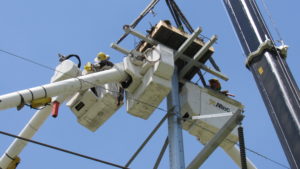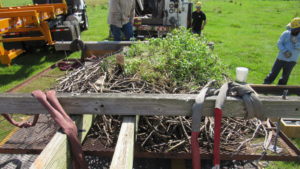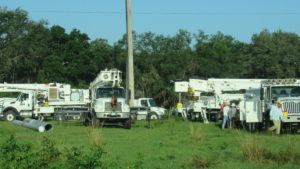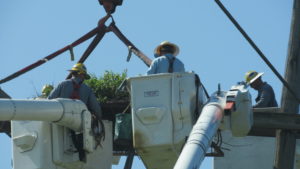
If the United States had picked the turkey as its national bird – a preference that Benjamin Franklin is thought by some to have expressed in private letters – then centuries of American iconography would be dramatically different.
One thing that would still be the same, however, is Tampa Electric’s commitment to helping birds like bald eagles thrive in nests that are safely away from our power equipment: it’s good for protecting the birds and good for protecting electric system reliability that you depend on.

A recent bald eagle relocation in the Lakeland area once again gave us the opportunity to walk the walk when it comes to environmental stewardship (instead of just squawking the squawk, you might say in this instance). On Sept. 30, a Tampa Electric transmission crew undertook the painstaking process to carefully remove a bald eagle nest that was dangerously close to power lines. With great care, they brought the nest down to the ground with a crane. They moved the nest to a TECO-built platform, which the crane then placed atop a different section of the same pole structure at a safe distance from the energized conductors. It’s similar to another option we regularly pursue, which is to place the new nest platform atop an isolated, non-energized pole. With both approaches, safety for the birds and safe electric reliability for you are our top priorities.

“In the end, it was another successful effort to help different members of the community – not just our national symbol but the many thousands of customers who rely on electricity from that circuit,” said Jerry Adams, coordinator of Environmental & Technical Training.
Eagles and ospreys like building nests on power poles because they like the height, which offers a good vantage point from which to spot prey below. The elevation also provides protection for their eggs … at least until you factor in the deadly dangers of electric equipment that most people take for granted.
As part of our commitment to reliability, we patrol all our power structures on a rotating basis, and this enables us to spot nests that look like they could pose trouble. If you see a solitary pole with a platform on top of it near our power lines, chances are it’s the home – former, current or future – of an osprey or bald eagle; this is a common approach to balancing the safety of predatory birds in the area with electric reliability.

…and if you see a nest that appears to be close to electrical equipment, maintain your distance (always a must with electrical equipment) and let us know about it.
“We have to balance our responsibility to provide safe, reliable power for our customers with environmental stewardship, and it’s a balance we have a lot of experience striking,” Adams said. “This area provides an ideal habitat for birds like eagles and ospreys, and every time we relocate a nest, no matter what kind of work goes into it, we know everyone wins in the end.”

No Comments Found